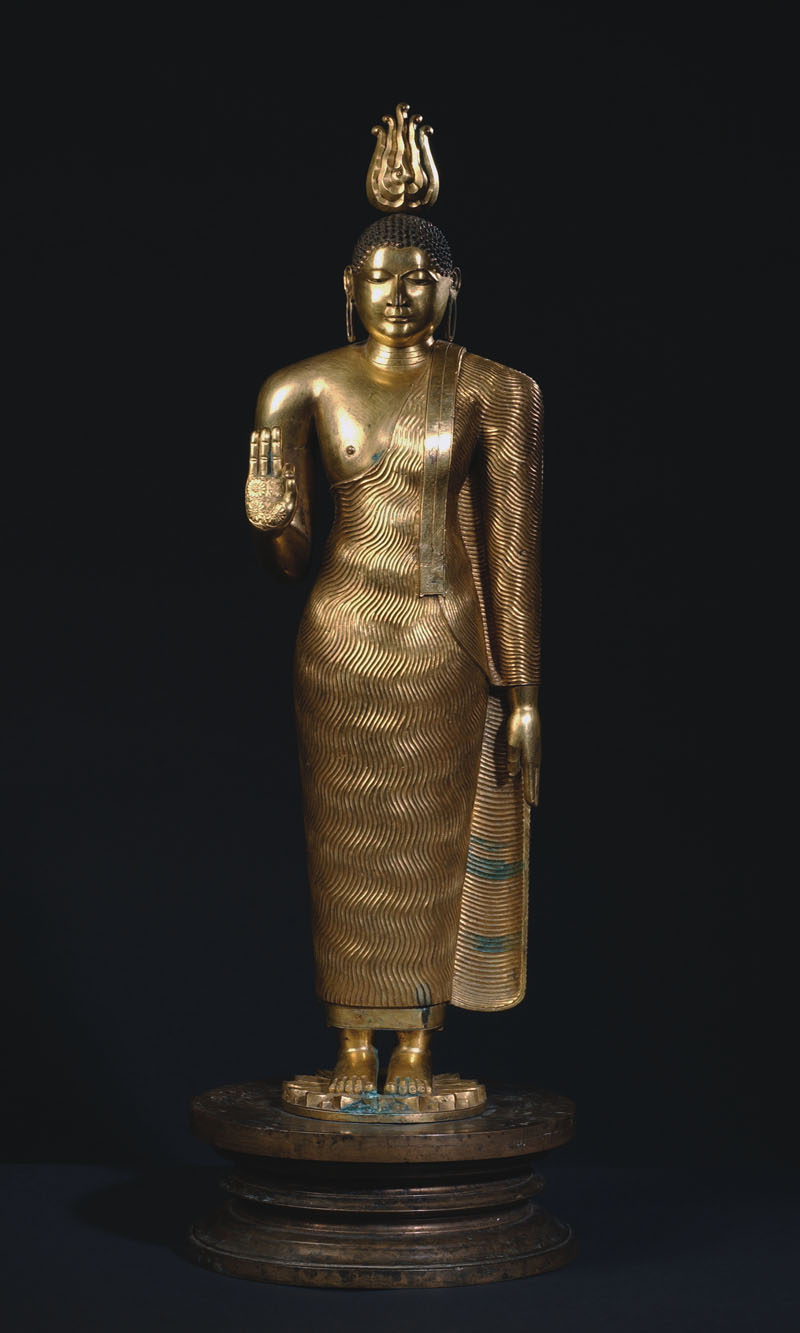EXHIBIT:
“Guardian of the Flame: Art of Sri Lanka”
WHEN:
Jan. 21 – March 19
WHERE: University of Virginia Art Museum
LECTURE:
Ellen Bayard Weedon Lecture in the Arts of Asia
“The Art of Sri Lanka,” by Janet Baker, curator, Phoenix Art Museum and exhibition curator
WHEN:
Friday, Jan. 27, 4:30 p.m.
WHERE:
Campbell Hall, reception following in the museum
January 6, 2005 — Organized by the Phoenix Art Museum and drawn from private collections, “Guardian of the Flame: Art of Sri Lanka” is the first U.S. exhibition to comprehensively explore the rich Buddhist heritage of Sri Lanka.
The exhibition, which runs from Jan. 21 through March 19, comprises approximately 100 rare and historic works made of stone, bronze, ivory, crystal and wood. It is particularly important because only a handful of museums in the United States hold examples of Sri Lankan art.
The University of Virginia Art Museum has a long history of presenting exhibitions of fine Asian art – from 16th century Chinese porcelain and 17th to 19th century Indian miniature paintings, to Japanese Ukiyo-e and provocative work by contemporary Chinese artists. The timeliness of this project is most appropriate as Sri Lanka emerges from a period of reconciliation after a tragic civil war and takes its place, once more, at the crossroads between East and West.
Buddhist art in Sri Lanka plays a special role in the preservation of earlier Buddhist art from India and the development and spread of teachings of the school of Buddhism known as Theravada. According to tradition, Buddhism arrived from India during the fourth century B.C. and quickly spread throughout the island. Island kings, in their turn, were quick to fund Buddhist monasteries and other religious and educational institutions. Reliquary mounds, or stupas, erected as shrines to the Buddha, dominated the skyline of the capital city, Anuradhapura, in testament to the royal commitment to this religion and to the wealth the kings could command.
Scholars generally agree that following the decline of Buddhism in India after the sixth century, Sri Lanka – because of the Buddhist relics preserved in its centers of worship – came to be regarded by the Buddhists of Burma, Thailand and Cambodia as a second holy land.
Many of the significant collections of Buddhist sculpture held by major museums and private collectors in this country belong to a later form of Buddhism, known as Mahayana Buddhism, which spread to Tibet, China and Japan across the overland trade route known as the Silk Road. Mahayana Buddhism places emphasis on the existence of Buddhas-to-be, or bodhisattvas, who work for the enlightenment of all beings, even those outside of the monastic community. By contrast, Theravada – the name means the “school of the elders” – is an early, orthodox form of Buddhism that focuses primarily on the life of the historical Buddha, Sakyamuni; his teachings; and the monastic community, or sangha, that grew up around him.
Apart from the stupas, which were built over the Buddha’s relics, the primary form of artistic expression for Theravada Buddhists is the Buddha image. The exhibition includes a large number of sculpted standing and seated Buddhas, as well as mural paintings about the Buddha’s life. Miniature stupas based on architectural models are also included.
The illustrated exhibition catalog includes an essay by eminent art historian Professor John Listopad of Stanford University, which provides a chronological overview of Sri Lankan art history beginning with the Anuradhapura period (second century) and concluding with the Kandyan period (17th through 19th centuries). Listopad also explores the stylistic connections between Sri Lankan images, their Indian prototypes, and the eventual development of a true Sri Lankan style. Additional shorter essays introduce the history and culture of Sri Lanka, explore the symbolism of the stupa form and of the Buddha’s footprint, and provide insight into collecting Southeast Asian art.
On Friday, Jan. 27, Janet Baker, curator of the exhibition and curator at the Phoenix Art Museum, will present an Ellen Bayard Weedon Lecture on the “Art of Sri Lanka” at 4:30 p.m. in Campbell Hall. The museum’s Fourth Friday reception follows, from 5:30 to 7:30 p.m., in the museum.
The exhibition is made possible at the University of Virginia Art Museum by the following generous sponsors: Ellen Bayard Weedon Foundation, Office of the Provost, E. Rhodes and Leona B. Carpenter Foundation, the Caterpiller Foundation and the Arts Enhancement Fund.
The museum is open to the public free of charge Tuesday through Sunday, 1 p.m. to 5 p.m.
For more information about the exhibit and the U.Va. Art Museum, call (434) 924-3592 or visit the museum Web site: http://www.virginia.edu/artmuseum.
Media Contact
Article Information
January 6, 2006
/content/uva-art-museum-features-buddhist-art-sri-lanka-special-exhibit

